The Most Beautiful Cities in Europe Among Capitals, As Seen Through My Own Eyes
PS: Most of the pictures in this article about the most beautiful capital cities in Europe were taken by me, the author. Since I am not a photographer, they likely don’t do justice to how glorious some places are.
Ps2: Visit also our channel, The Expat
During the last few years, both as part of my job as a hospitality entrepreneur and writer and also as an avid traveler, I visited 22 capital cities in Europe, not counting microstates like the Vatican city (since they don’t have capital cities).
What is Europe’s most beautiful city? is one of the most common questions we get.
Some people say that beauty is difficult to define. I disagree. Beauty is a combination of qualities that please the aesthetic senses.
What is subjective is what each person finds pleasing to their sense of beauty. I once met a guy who considered that black fabric for furniture was better than gobelins or jacquard. He said he was a minimalist, and that is why he preferred plain, dull black. Later on, he revealed that it was not the black that was more beautiful for him, but he preferred it since it was more difficult to spot stains when it got dirty.
So, in this list, you can expect cities that please the senses. At least they pleased mine and all my companies when we visited them.
I am also not evaluating anything else other than the aesthetic criteria. Some of the cities with low scores fare remarkably well in other things, like history-filled Bucharest. All these cities, however, are relatively safe, and none of them figure among the most dangerous cities in Europe.
Each city is rated from 0 to 10. It may be cruel, and if anyone has any point to make, feel free to do so in the comment section.
However, once more: this is not supposed to be an insult, and while some cities may not be the most aesthetic, they have their own qualities.
With no further ado, it’s time to start. Since the article is about the most beautiful cities in Europe from worse to best, we start with the ugliest.
Read also: The Fastest Growing Cities in Europe Have Some Odd Similarities
The LEAST Beautiful Capital City In Europe*: Berlin, Germany
*The least among the visited ones.
Rating (from 0 to 10): 3
Berlin is ugly. Yes, it has an interesting past; every district is full of history, it has an iconic landmark like the wall, and it is a great place to party if you like electronic music (like I do).
But it is ridiculously ugly. Let’s start with the bizarre TV tower that just looks like a giant toothpick (to not say worse).
Then we see dozens of construction sites and graffiti-covered walls with unexplained characters that try to be edgy but are just an eyesore.
The former communist part still looks like a desolate concrete jungle, and there is a complete lack of harmony with the (still-existent) historical buildings… argh.
Yes, Berlin is not among the prettiest cities in Europe or Germany (Munich is a much more charming city).
I dare to say that Berlin is not even the most beautiful city in Berlin.
Read also: Is Berlin safe in 2023?
20 — Tirana, Albania
Rating: 4.5
While Berlin is ugly despite being the capital of a wealthy country, the same cannot be said about Tirana.
Albania is one of the poorest countries in Europe, and Tirana reflects that. Still, this nation has some lovely cities, like Shkoder, and the people I met there are remarkably friendly.

19 — Bucharest, Romania
Rating: 5
When I visited Bucharest, the tour guide started with this short explanation:
This city used to be beautiful. However, in the 70s there was an earthquake; large parts of the city were destroyed, and the communist dictator who ruled the country decided to rebuild it according to his own taste.
The dictator (Ceaușescu) apparently had a particular taste for urban landscaping. The city has large avenues and is relatively well-planned, but sadly, concretism and brutalism are everywhere.
But Romania does have many gorgeous cities, and I’ve already suggested Brasov for a winter trip in Europe.
18 — Podgorica (Montenegro) and Sofia (Bulgaria)
Rating: 5.5
Both cities have a similar past: communism.
As someone who also lives in a former communist capital, I do recognize that there are some positive points, like the abundance of services always available at a close distance (making cars something completely dispensable).
But the buildings are ugly. As in almost all former communist countries (and for some reason, in Brazil), public buildings and urban planning followed a school of architecture called brutalism.
Brutalism emphasizes the functionality of a building over its aesthetics. This indicates that the function of the building takes precedence over its aesthetics. Practical factors like the building’s function or the materials available frequently are preferred over beauty.
Podgorica however, is a surprisingly interesting destination for the month of January.
16 — Moscow (Russia) and Bratislava (Slovakia)
Rating: 6
Moscow and Bratislava also share a common point: both are aesthetically outclassed by their former sister cities.
Saint Peterburg (the Russian capital until the Bolshevik revolution) and Prague (the capital of Czechoslovakia, the country where Bratislava belonged until 1992) are way more attractive.
It is not that both don’t have their beautiful parts. Moscow has some really beautiful squares, parks, and historical buildings, and the same can be said for Bratislava. But they are just small parts drowning in a much larger brutalist setting that reminds the clichés about eastern Europe (although Bratislava is technically in central Europe).
14 — Warsaw (Poland) and Belgrade (Serbia)
Rating: 6.5
Warsaw has a lovely old town, except that it is not really old but a reconstruction of the former old town that was completely destroyed during World War II. It is still beautiful, and if you are somewhere around, visit it.
Belgrade is the same. Stari Grad is pretty charming (and the street sellers of Rakia during the evenings made it even better). The city was dangerous in the past but the criminal clans are virtually gone. Today, it is one of the most vibrant cities in the Balkans.
The farther you go from the old town square, they are ordinary cities with traffic jams and some cringy post-modernist buildings, like the recently built (and pathetic-looking) Warsaw museum of modern art.
However, for history lovers like me, both cities are remarkable and have really good museums. In 24 hours in Warsaw, you can be shaken by the place’s history.
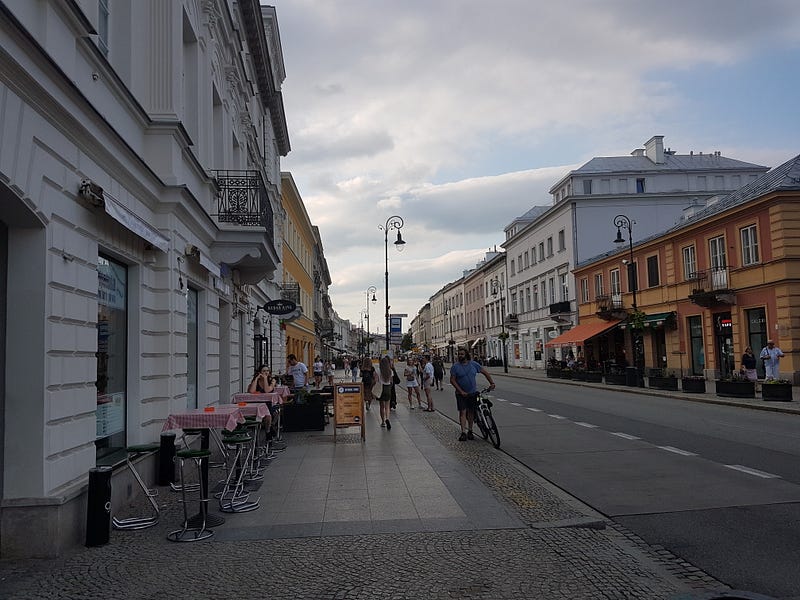
12 — London (England)
Rating: 6.75
This was likely the most difficult rating for me to give.
From one side, London has splendid historic buildings with beautiful architecture like the Buckingham Palace, Tower Bridge, and Big Ben. Even the hostel where I stayed there (the Palmers Lodge at the Swiss Cottage) was located in a charming house.
But at the same time, London is a noisy modern city, quite crowded, and has monstrosities like:
- The Shard. It is like a giant glass pencil that got stuck in the ground and forgot to sharpen its point. Tall and shiny, like a beacon for birds looking to crash into something.
- The Minster Building Some people call it neo-gothic, but I call it silly. It looks too cartoonish, almost as if an architect tried to design an office tower based on the castle of Gargamel from the Smurfs.
- The Trellick Tower Despite the fact that England was never under communist rule, somehow they managed to build a brutalist monster that could come from the darkest corners of the USSR.
Somehow, and that is a very subjective impression, I feel that London is the most Americanized of all European capitals, and this is slowly destroying its English atmosphere.
11 — Dublin (Ireland) and Athens (Greece)
Rating: 7
Dublin (which is also one of the cheapest destinations to fly into Europe if you are in America) has numerous examples of Georgian architecture that are very well preserved, as well cobblestone streets that transport you back in time. If it were not for some random post-modern buildings creeping into this scenario, I would give them even more than a 7.
Athens could be much higher. This ancient city has iconic landmarks enough to be one of the most visited tourist destinations in the entire world. The not-so-ancient is also worth a visit, like the many orthodox churches.
But… apparently, years of economic turmoil have taken a heavy toll on the city. Outside of the most famous districts, like Plaka (and the pretty colorful houses), many places look rundown. Athens also got more dangerous, unfortunately.
Check also: the most dangerous city in Europe by country.
9— Budapest (Hungary) and Vilnius (Lithuania)
Rating: 7.5
Budapest has some splendid districts that mix Neoclassical, Gothic, and Baroque architecture, bringing from one side a Habsburg flair influenced by oriental scents — check the thermal baths. The Danube River in the background makes it even more charming and helps us to understand why this is one of the best cities in Central and Eastern Europe to visit.
The Hungarian capital. has one of the most amazing Christmas markets in Europe, in a scenario that fits perfectly the seasonal feeling (and where you can find delicious food).
Vilnius is a hidden gem in the Baltics, a city that I visited almost by accident and loved.
It is an underdog on almost any tourist route and one of the most underrated cities among the capitals of European countries. For this reason, it is also one of the most surprising little capitals you can visit. This lovely city is also very walkable.
7 — Prague (Czech Republic) and Lisbon (Portugal)
Rating: 8
Prague was a disappointment for many reasons for me, from the scammers and excessive number of tourist traps to some “attractions” trying to rip you off all the time (apparently the only things that are really cheap there nowadays are beer and bariatric surgery).
But one cannot deny that this former capital of the Holy Roman Empire is charming with its cobbled streets and medieval architecture. Here are some travel tips for when you visit Europe, including the most visited city in the Czech Republic.
The Prague castle and the St. Vitus cathedral are two must-visit, even if you just see the external parts. The Charles Bridge is another very aesthetic landmark that you can see for free. Finally, Prague is a relatively compact city, with a well preserved old town.
Lisbon didn’t disappoint me, but the opposite.
I didn’t have high expectations, and it surprised me positively with its colorful buildings, well-preserved monuments, the feeling of safety, and harmonic urban arrangement. It was easy to understand why Lisbon is so attractive to expatriate pensioners, remote workers and digital nomads.
I just wish I could spend more time there since I couldn’t yet visit some of the not-so-popular attractions like the Telecabine Lisboa, a cable car with panoramic views over the Tagus river.
As strange as it may sound, if I had to describe one city as tasty, it would be Lisbon.
5 — Paris (France) and Copenhagen (Denmark)
Rating: 8.5
Some context is needed to explain this particular pair in the top 5 of the most beautiful capital cities in Europe. Once on a social media network, someone asked what city was better in Europe: Paris or (secret: this city actually tops our list).
I said that Paris, a city for which we addressed safety issues here, couldn’t compare to this city, even though the French capital does have a lot of lovely buildings, streets, and parks (but the Eiffel tower is overrated). Boulevards like the Champs-Élysées make strolling around one of the most exquisite experiences.
Unfortunately, the city is slowly creeping into certain hypes of questionable taste.
One of these hypes was the so-called high-tech architecture, and the ugly fruit of this in Paris was the Centre Georges Pompidou. It was supposed to look modern, and maybe it looked like that when it was built in the 70s. Nowadays, it is kitsch and completely out of place.
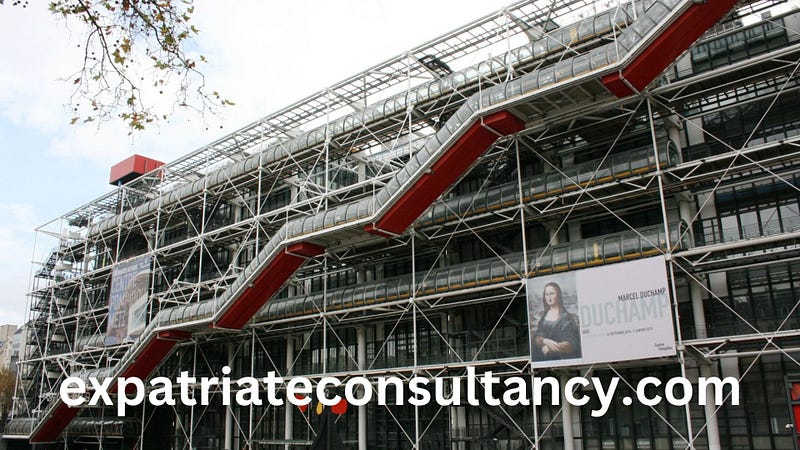
Copenhagen, on the other hand, may not have the same heritage or architectural richness as larger European cities, and neither boulevards like Paris. But it is a capital city with the feeling of a smaller, regional town, where you can go by bicycle everywhere.
It is a very balanced city, where life looks simpler (not sure if this is just an impression or reality, since I spent just a short time there).

The 3rd Most Beautiful Capital City in Europe: Valletta (Malta)
Rating: 9
Valletta brought me back in time, and I fell in love with this city as a shipwrecked sailor would in the XVI century.
There is a bit of bias here. Because I love Baroque.
And there is only one other capital in the world (which is next in this ranking) where you can see such an intensity of Baroque masterpieces translated into buildings, winding streets, roofs, quaint cafes, etc. as in the picturesque city of Valletta.
The Maltese capital is quite recent, developed by crusaders during the XVI century (that explains why Baroque is everywhere there) in substitution to Mdina, a medieval old town located in the center of the island.
It is not a surprise that such a beautiful city is a popular retirement destination in Europe. Almost the entire city is a UNESCO world heritage site.
The palaces, alleys, piers, and all other man-made wonders are in a perfect fusion between rich history, the privileged natural landscape, the Mediterranean Sea (not far from Valletta is Mellieha, one of my favorite beach towns in Europe), and the carved coast.
It is a feast for the eyes.
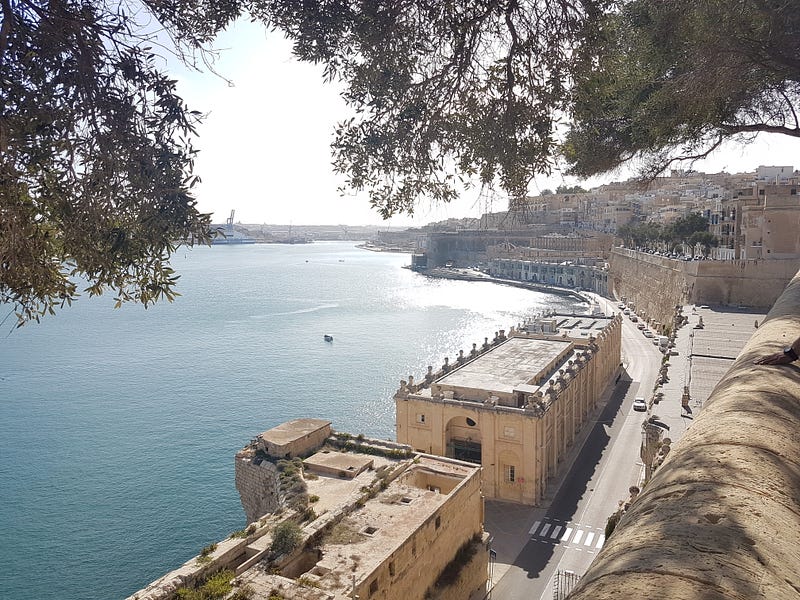
The 2 Most Beautiful Capitals in Europe (Surprise?)
More than once, I have been asked what the most beautiful city I have ever visited is.
My answer is always the same: Rome and Vienna.
And as a father, when asked which kid is his favorite, I refuse to say which one is better, for the same reason the father would:
They are thoroughly different cities, and both are majestic in their own way.
Rome, the eternal city, is the triumph of the human will and of the aspirations that nourish and move our spirit.
Many of Rome’s details, from a distance, look just like marble and stone, but the grandeur of the whole is breathtaking. Rome gets crowded, however, and that is why I recommend visiting it in November.
And this grandeur crosses millennia, from the Castel Sant’Angelo, built over the foundations of the Mausoleum of Hadrian, a construction of almost two thousand years…
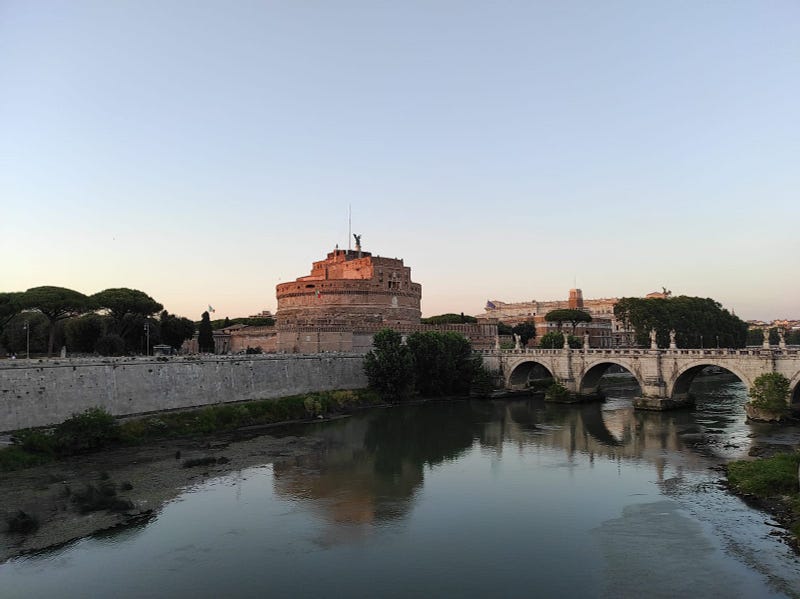
Or modern buildings, like the Altare della Patria, a monument finished at the beginning of the XX century.
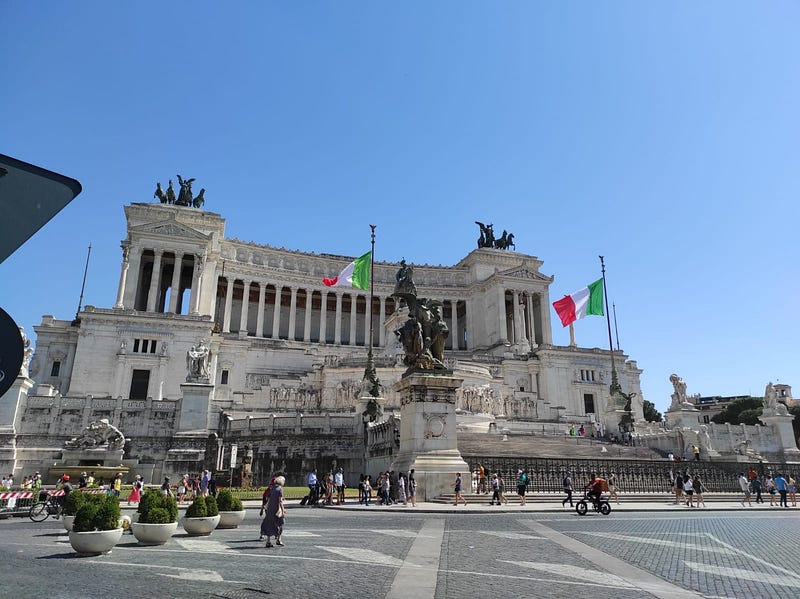
On the other side, Vienna is a hymn to man’s ability to create beauty in every inch, word, brushstroke, and musical note.
Vienna is the beauty of details and of good taste. A refined beauty, baroque-rococo, that brings a bit of the divine even in the most trivial constructions
The Habsburgs and their architects, who projected the city, didn’t create buildings only for their functionality.
It needed to be breathtaking in every detail of its Renaissance architecture, almost as if whoever projected these structures, parks, and streets wanted to play a game of “how many jaws can we drop in a day?” at every single building, no matter their purpose.
I could write about well-known top attractions like the Schönbrunn Palace, but Vienna is so much more than that.
This, for example, is their national library.

Someone could still say, “So what? It is just some nice wooden shelves and a statue. Not very impressive.”
Then I would tell him to look up, at the ceiling.

Not far from the library, we passed in front of a cinema. It looked better than the presidential palace of my home country.
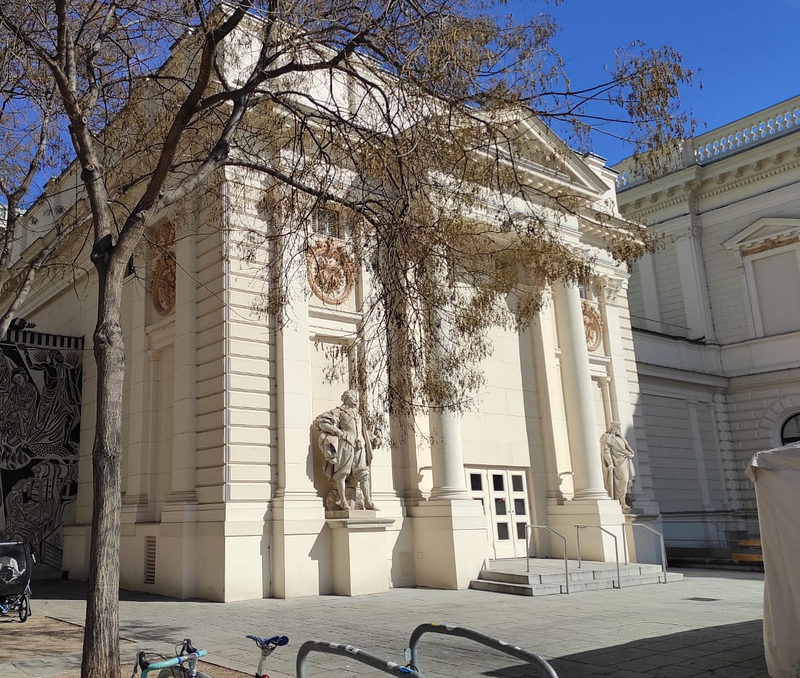
In the evening, my wife and I decided to have a coffee. A typical Viennese coffee, so we choose a nearby cafe.
I chose a random place that does not even figure in any ranking I saw about the best cafés in Vienna.
Then we entered it, and…
It was simply the most spectacular coffeehouse I have ever been to. The picture doesn’t do justice to how sumptuous the interiors looked. And contrary to general belief, the waiter was friendly and polite.
The name of the cafe is Gerstner K. U. K. Hofzuckerbäcker.
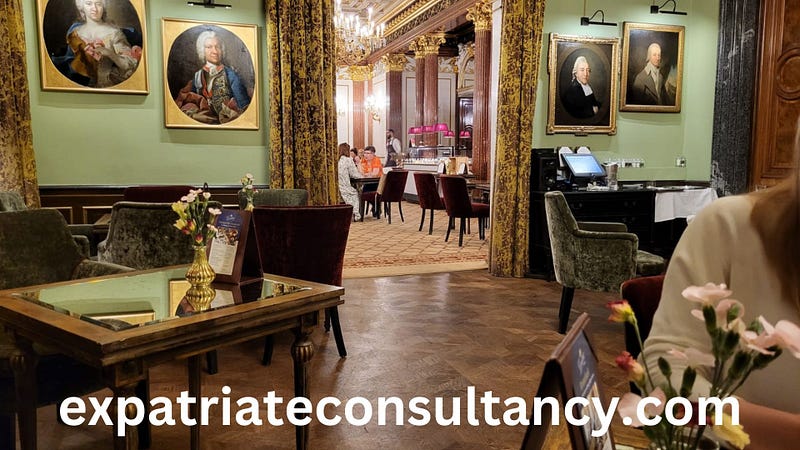
Seeing how the Austrians of the 18th and 19th centuries managed to create beauty in even the most ordinary places, I can understand the effusiveness of one of my favorite composers, the Viennese Johann Strauss II.
Every step I walked felt like a note from the Blue Danube, every corner I turned, it was like a section from the Frühlingsstimmen. Perfection.

If you enjoyed this article about the most beautiful capital cities in Europe, here are a few other travel tips and reading suggestions for you:
The 7 Countries With The Worst Work-Life Balance in The OECD
The Best Cities for Remote Workers in 2023
The Mind-Blowing Tourist Scams You Can Find in Europe
Levi Borba is the founder of The Expatriate Consultancy, creator of the channel The Expat, and best-selling author. Some of the links in this article may be affiliate links, meaning that the author will have a commission for any transactions.




